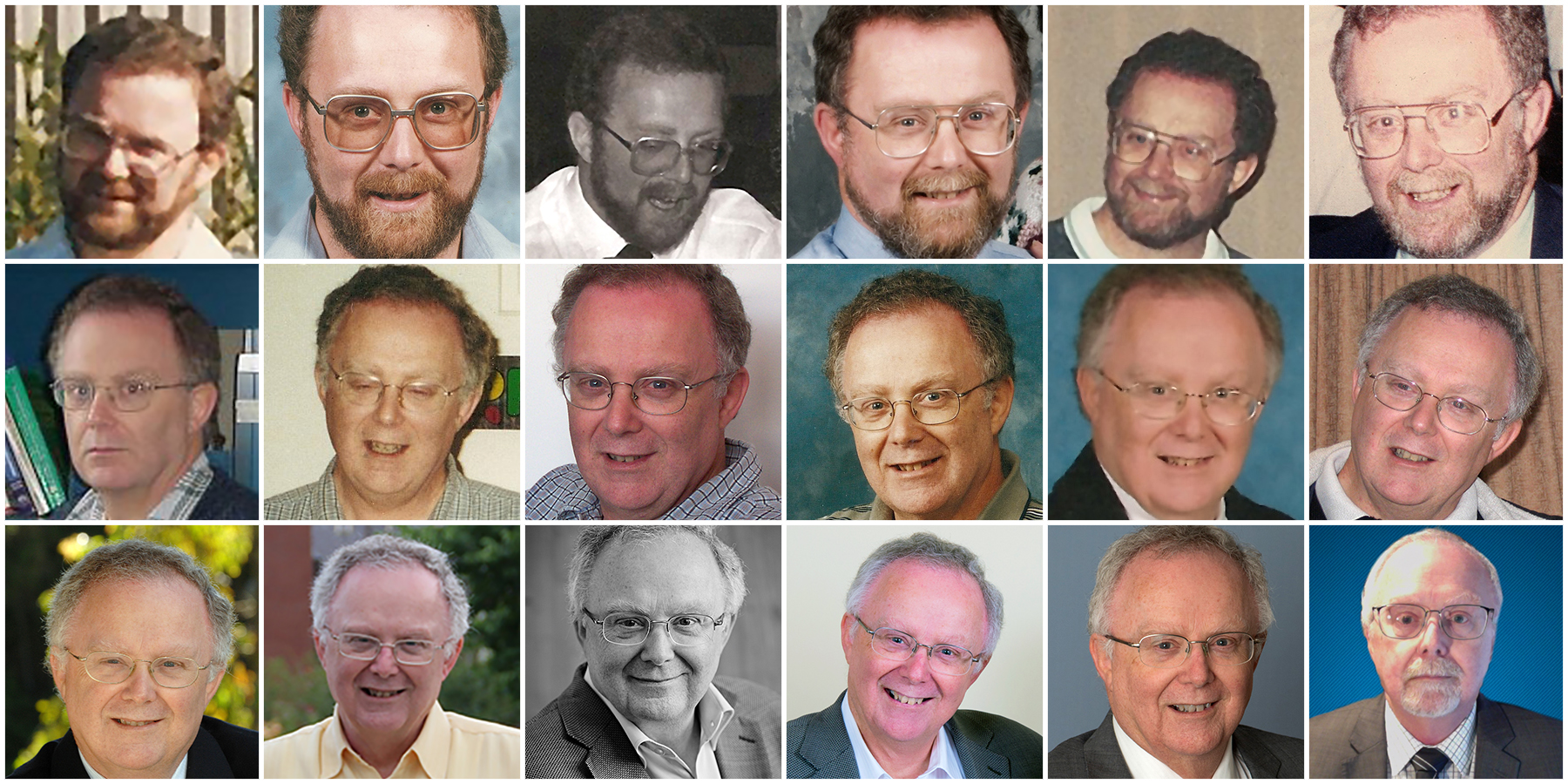LEARNING AND TEACHING
Reflections on a Career in Education — Professor Malcolm Campbell
In recent years I have found an interest in searching my family history. I have trawled through hundreds of old photos and searched through online databases, and filled in many gaps that were unknown to even my mother. Still, there are many parts of my family history that will be impossible to discover such as the careers that my family had and how they went about work. For example, I know that my great-great-grandfather, William Muir, was a school principal in Truganina, but how did he become a teacher? I know that my grandmother was a seamstress but yearned to be an actress. Why? I never knew either of my grandfathers, and although I know their occupations, I have heard no stories about their work and their colleagues.
My motivation for documenting my career is to put down my story for my grandchildren and great grandchildren should they, one day, want to search for their family history. It is there for them, so they can understand what I did and what it meant to me. As I write this, I have spent half my life at one institution. My career as an academic has sustained me and engaged me with such a passion, that I felt there was no need to move elsewhere. I have been a learner for all of my life and I am still learning – I love to teach myself new things. So, when people ask me what I do, I simply say that I am a teacher.
The sections below divide my career into periods of time. Each period — whether it is one year, or many years — describes something of career importance to me. All sections describe many of the achievements that I value, while some describe the career learnings that I have had along the way.
I have had a career spanning 44 years in education. I have had many wonderful opportunities to make work both worthwhile and rewarding. Much of the pleasure I have derived from work has been afforded by my opportunity to share my time with students and colleagues.
My career began in 1977 at Mooroolbark High School teaching Chemistry, General Science and Mathematics. In 1984, I introduced Computer Science as an area of study into Mooroolbark, developing curriculum and resources to teach through to VCE. In 1987, I moved from Mooroolbark High School to a role as a Senior Tutor at Victoria College, Rusden, a College of Advanced Education. I was appointed as Lecturer in Health Promotion teaching information systems within the newly developed Bachelor of Applied Science (Health Promotion) course between 1989 and 2000. Victoria College merged with Deakin University in 1992, and I stayed with the Faculty of Science and Technology as a Lecturer in Information Technology rather than joining the Faculty of Health and Behavioural Sciences in Health Promotion. My main teaching areas were software development and human-computer interaction. In 2001, after 12 years as a Lecturer, I was promoted to Senior Lecturer. I was appointed as the first Associate Dean (Teaching & Learning) in the Faculty of Science and Technology in 2003. In this role my leadership skills flourished and I was promoted to Associate Professor in 2006 and then in 2013, to Professor.
Over my career at Deakin University, I have held many roles including: Course Director for the Bachelor of Computing (Applied Computing); Chair of the Faculty Academic Progress and Discipline Committee; Chair of the Faculty Admission and Selection Committee; Chair of the Faculty Teaching and Learning Committee; Member of the Academic Board; Member of the University Teaching and Learning Committee, Chair of the University Teaching and Learning Committee; Chair of the University Implementation Committee for the introduction of D2L; Member of the University Appeals Committee; Chair of the Faculty General Misconduct Committee; Chair of the University Curriculum Information Management System Task Force; and Chair of the Course Manager Steering Committee.
My work over the years has given me great fulfilment. To retire with a sense of achievement is a wonderful feeling. I have no regrets (well maybe a couple) and there is much that gives me a sense of pride. It is not always the big achievements that sit at the top of the list either. I am proud that I helped forge the ADTL role as a significant driver of education at Deakin. I am proud that I am an adopted member of the Governance and Curriculum Group (now Curriculum and Academic Support Team). I am proud that I have created a place for WIL in our curriculum. But most of all, I am proud that I have enabled many others to find themselves and seek their dreams, for I have finally discovered the true meaning of my role as an educator – to enable the growth of myself and others.
I joined the workforce in 1977 after completing a Bachelor of Chemical Engineering and a Diploma of Education, taking up the role of a Science and Mathematics teacher at Mooroolbark High School in Melbourne’s east. I was asked recently what my first salary was? As far as I can recall, it was around $8,000-$9,000 per year. I was fortunate to have been appointed to this School, because I had the privilege to have four of the very best sponsors, role models and mentors that one could have at the beginning of one’s career.
There are very many of the characteristics that people attribute to me, that really must go to the mentoring provided by this group. Don Wagstaff showed me how important a bit of fun was to the engagement of students. Richard Miller taught me the importance of curriculum planning and standards in teaching. Bruce Barton and Diane Stone both showed me how much you can learn from other disciplines, but Bruce in particular encouraged me to be bold in thinking of new directions and Diane was the ideal role model for coordinating large groups of students. More importantly, this group showed me what I could be, rather than what I was. We all need our believers who stand behind us and support (and sometimes push). I think my belief in collegiality and mentoring began at the very start of my career.
I remember quite vividly my very first parent-teacher night. A few weeks earlier, I had had some heavy feedback on my written reports for each student. But that was nothing compared to having to front a Mum and Dad who wanted to hear that their son or daughter was brilliant. Some clearly were, but most were not. I tried to be nice to everyone and not finding fault in anything that my students did. I sensed myself floundering as every new parent group arrived. It wasn’t until much later in my career that I learnt to be much more direct. I learnt a lot from Richard and Diane about saying it how it is.
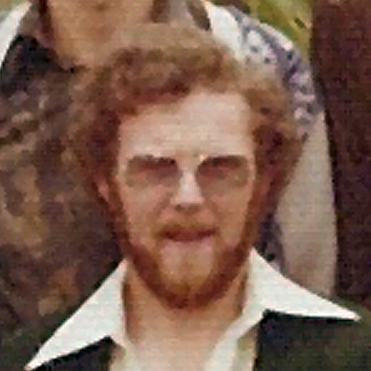
Mal, 1977
After surviving my first year of teaching and learning much more about my craft through “on-the-job development” than I did in my teacher training course, I started to understand myself better as a teacher. Teaching is much more than the delivery of content. It is about engaging students in their learning as well as the management of student progress and behaviour. It was about monitoring and providing feedback. My mentors were always available and we often engaged in peer observation of each other. The feedback sessions were invaluable in allowing me to understand how to grow as a teacher. This experience formed the basis of the Peer Observation process I proposed and developed with Gayle Morris at Deakin later in my career.
However, I think the real understanding of myself as a teacher came when I was told that the curriculum for my Year 9 General Science course involved Sex Education. As a quiet and shy 25-year old (yes, I really was!), the experience really must have been hilarious for the staffroom and for the students. I got through that first year, but I learnt that what the students really wanted was to have their questions answered. In the years after 1978, I would run an anonymous ‘ask any question you like’ session which was often fun and entertaining for the students, but also had a serious note to it. For those of you who can remember the orientation sessions I ran at Deakin, you will recognise this anonymous Q&A technique – although the topics and questions were very different.
In 1978, the School offered Year 12 for the first time, and so the senior staff were heavily involved in getting this year level up and running. As such, I was needed to teach Year 11 Chemistry and Physics as well as General Science and Mathematics. It was an odd experience, teaching students who were close to my own age, however I also found that I preferred to work with the older students. The Year 7s were great, not so much the Year 9s, but Year 11 and eventually Year 12 was where I felt I had the most impact.
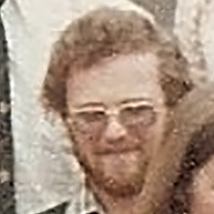
Mal, 1978
Over the next five years my experience as a teacher, and I suppose the quality of my teaching, improved rapidly. The school continued to grow and so more teachers were required within our department. I was mentor to a new crop of beginning teachers and so I started to give back the learning that I had with my own mentoring group.
The activities of senior staff building VCE subjects across all disciplines exposed me to external standards and curriculum in ways that I had not considered before. It brought to the fore, the concept of scaffolding and how Levels 7 to 11 could be configured to improve learning at Year 12. In some years I had the opportunity to teach VCE Chemistry. I found that the training and mentoring I had received from my peers allowed me to develop learning resources that made a difference. Over time, I became the primary VCE Chemistry teacher in the school.
During this period, Richard Miller and I started to play with the ZX81 microcomputer. I had been introduced to computing and Fortran IV programming in my Engineering degree. The early 80s saw microcomputers begin to be introduced into education, particularly Seymour Papert’s work with the LOGO programming language. You needed an Apple II computer for this work which was very expensive at the time, hence our focus on the ZX81. Not much has changed – Apple computers are still very expensive.
We did recognise that computers and technology would have a role to play in education in the years to come, and had started to develop some thinking around teaching computer science into Year 10 as an elective and then into Year 11 and Year 12. Bruce Barton in Commerce, also saw the need to develop student skills in computing. He and I put in a bid to the Education Department for funding to purchase a computer for the School. Late in 1982, we were advised that we were successful and proceeded to purchase a Cromemco computer, punched cards and a card-reader. We started preparing for a Year 10 elective class in Computer Science. I enrolled in a Graduate Diploma of Computer Education at the Melbourne College of Advanced Education (The University of Melbourne) in 1983 to support my development.
In 1983 one of my mentors, Richard Miller, was promoted and moved to another School. It was a sad moment as we, along with my other mentors, had created a strong team. It would not be long before they too, would move on. Indeed, not long after this, Diane Stone moved to a new school.
Over the five years from 1979 to 1983, my teaching had a mix of junior and senior school teaching in the areas of Chemistry, Physics, Mathematics and General Science. I became quite practiced at providing advice on curriculum and student issues within our own staff group. I was, however, a silent participant in whole of school staff meetings. I admired the teachers who could stand and speak to a topic with passion, clear logic and skill. It was a quality that I wished I had, but could not overcome the fear of making a fool of myself. It was a skill that I wanted to develop.
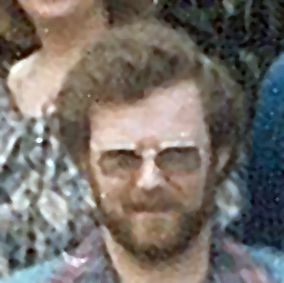
Mal, 1981
In the 1980s the Victorian Education Department had a system of promotion that required the production and presentation of a portfolio of evidence of success for external evaluation. My portfolio was over 400 pages in length covering philosophy, practice and examples of student outcomes. I produced this on two occasions: the first in 1983 and again in 1985. The outcome of this application process was provisional promotion to senior teacher. I didn’t make it the first time, and like many others, was quite disappointed. However, I was successful the second time. Provisional promotion entitled you to apply for positions advertised at the new level. Each school was only allocated a certain number of senior teacher roles, and you virtually had to wait until someone retired or died to get an opening. The selection process was not done by interview or assessment of skills – this was done in the provisional promotion rounds – appointment to advertised positions was based on the date you joined the department. The longer your career history, the higher you were on the promotion list. I joined the Education Department at the end of my Dip.Ed., 6-8 years behind those who had a studentship for their undergraduate studies. Promotion was unlikely to happen for me unless the system changed. From this experience I drew my first commitment to myself: to always value the skills and expertise of the individual.
In 1984 (yes, the George Orwell year), I taught Year 12 Chemistry as well as General Science and Mathematics. I had Initiated the Year 10 Computer Studies elective and my future career was being shaped without me realising it. I graduated from my Computer Education course at the end of 1984. I also had the opportunity to trial and comment on Lego Technic before its official release. It was through this platform that I started to build electronic components that could be controlled by a computer. Apple II computers were still far too expensive and were dominant in the Primary School market. Instead, I was using a Commodore 64 microcomputer with its open S100 bus for controlling external equipment. For my Grad. Dip. Computer Education final project, I built a system that allowed Logo-like commands to control external equipment, switching lights on and off, etc.
Teaching computing seemed to be what I did best. I joined the Computer Education Group of Victoria and started to understand what was happening in other schools. The teaching space seemed to be divided into the Apple II computers (mainly in primary schools) and other computers (mainly in private secondary schools). I began to form a small network of external colleagues who were able to share ideas, curriculum and learning resources. I was here that I started to see the value of external networks, working with ideas beyond your immediate area.
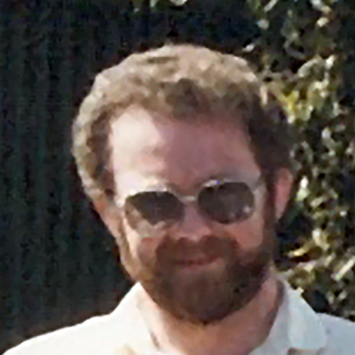
Mal, 1984
I introduced Computer Science to Year 11 in 1985 and then into Year 12 in 1986. I relinquished Year 12 Chemistry in 1986 to take up Year 12 Computer Science. There were very few texts available for secondary school students in the area of Computer Science. I had already developed a set of study notes to support my VCE Chemistry teaching, so I used a similar pattern to develop a set of study notes for the VCE Computer Science curriculum. At the time, McGraw-Hill were looking for a set of Computer Science study notes to add to their Checkmate study guide series. I was commissioned to write the guide for Year 12. I finished the study guide in 1986 and it was published in 1987.
I was asked to take on the role of Science Coordinator and Computer Studies Coordinator in 1985. It was the first time that I had formally led a team. It was a new experience and I was totally unprepared to manage staff. Again, I used the mentoring provided by Don Wagstaff and Bruce Barton to provide the necessary insights into leadership. It was through these insights that I began to gain the confidence to lead and provide comments and discussion items at staff meetings. Even so, I still felt that I did not have the ease that others had in expressing ideas and perspectives on education.
In 1986 I also began looking seriously for promotion into another school. I was continuously unsuccessful because my Department record number was still too high. At the time, our laboratory technician, Graham Marshall, was completing a degree in Information Management at Victoria College, Rusden. He thought that I could teach into this program and encouraged me to apply. Initially, I ignored Graham thinking it was way beyond me, but after a while his persistence encouraged me to contact the College. There were no current positions available, but they did indicate that positions would be advertised in the new year. I started to read the job advertisements. It was not that I didn't like teaching or Mooroolbark High School because I loved my job and its location – I felt that I could do much more in an environment that dedicated itself to teaching computing.
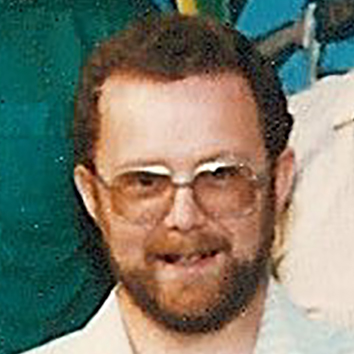
Mal, 1986
1987 proved to be one of those serendipitous moments in time that alters the course of one’s career. I was 34 so it was a bit early for a mid-life crisis. However, it was so unlike me to take a pathway that was not thoroughly detailed and planned, and what happened was far from my normally conservative approach. One might say that it was the best career decision of my life, but at the time there were some doubts. My wife, Debbie, will probably tell a different version, but this is my version!
The year began quite normally. We had moved to a new house in Mooroolbark to be closer to our schools – Debbie taught locally as well. The garden needed to be converted from a building site into something the children could use – and we needed to get ready for the new school year. As with many School holidays, a fair bit of time was used in getting prepared. My book was running late and so I needed to print up copies for my students and the activities needed to be planned. At the same time, I was looking in the papers for positions at Victoria College.
Just after the school term started, the job appeared for Victoria College. It was a Senior Tutor role not a Lecturer role, but I was still interested and determined. I discussed it with Debbie, and she agreed that I should apply. I don’t think she denies this. I sent off my job application. A week or so later, I was invited for an interview.
My interview for a senior tutor role at Victoria College was with Prof David Stokes and A/Prof Ian Dickson in David’s office. I do remember that it was very casual, or at least had that feeling. I don’t remember much about the interview itself, other than three observations. I sat facing the window and the summer sun. When I started interviewing candidates myself, I have always remembered that day. Ian Dickson was fascinated with my study guide. I didn’t appreciate the value placed on publication in the higher education sector. Lastly, Ian took me on a tour of the campus indicating where my office world be, who I would be working with and where I would be teaching. When I saw the labs, with banks of terminals and microcomputers (primitive by today’s standards), I thought I was in heaven. Mooroolbark had a very small bank of Commodore 64s. I had a good feeling about this opportunity and discussed with Debbie about switching roles.
The role was offered and I accepted on the spot. This is the bit where my story and Debbie’s deviate. I assumed that because we had discussed switching roles, that I didn’t need to discuss accepting the role. On reflection, I might have erred there. The other aspect was that life as a Lecturer appealed, life as a Senior Tutor, not that much. Then, there were the issues of a lower salary and higher super contributions, and a salary that was paid monthly, and a time when home loan interest rates were topping 17%. It was hard and my family were great supporters. I did promise that I would make up for the short-term loss quickly.
On Friday May 22 1987, I finished at Mooroolbark High School as Science and Computer Studies Coordinator and as VCE Computer Science teacher. I left behind my two mentors, Don Wagstaff and Bruce Barton, and fond memories of a wonderful group of teachers who were all so dedicated to our students. My VCE group were disappointed, but I left them in the care of my colleague who I had trained to teach into Year 11.
I left behind a quick car ride to work, for a longer ride to Rusden. And I left behind school holidays for four weeks annual leave. But what I had in front of me, was the opportunity to learn that surpassed whatever I could imagine doing at a secondary school.
I started working at Victoria College, Rusden on Monday May 25, 1987. (My last working day at Deakin is Monday May 25, 2020—you might see the link for choosing such an odd departure date.) I had signed a contract in the weeks before this date, had received a welcome letter from the College Director, Dr Colin Campbell (no relation), and received instructions on where to report on the day. In the week before commencing, I received a phone call from Irene Henderson letting me know that those instructions had changed and that there was a Faculty Retreat day on the Monday, and I was to report to the Melbourne Zoo at 10am for the retreat. Wow! What a start: no 8:30am staff meeting and no students on Day 1.
I joined the Faculty of Applied Science on May 25, 1987 at the Melbourne Zoo. The Dean was Professor David Stokes and the Academic Secretary was Irene Henderson. I was part of the Information and Numerical Sciences Department which was led by A/Prof Ian “Dicko” Dickson. The first three colleagues I met were: Albert Goodman, Andrew Treloar and Graham Hill. Albert and I became close friends and he was my academic mentor for much of the first half of my career. Albert was a deep thinker and filled in all of the gaps I had on how to “be” an academic. There were only two other Departments in the Faculty, that of Department of Heritage and Resource Management and the Department of Educational Technology (at Toorak). However, most staff were organised into courses rather than departments, and more academics were part-time rather than full-time. There were two streams of the Bachelor of Applied Science: Environmental Assessment and Land Use Policy, and Scientific Information Services. There was also the Graduate Diploma in Museum Studies and the Associate Diploma in Media Production.
In the early days at Rusden as a senior tutor, life was much simpler than it is now. In a College of Advanced Education, all of the focus was on teaching. Research happened, but it was not with the same kind of vigour. Many academics had had teacher training and so the staffroom conversation was nearly always focussed on teaching and teaching experiences. There was time to discuss and debate curriculum, student management and teaching practice. It was also the beginning of technology innovation and evolution in education and so, there were many opportunities to experiment with using technology to teach and teaching about technology.
When I joined the Faculty there was just one undergraduate program, the Bachelor of Applied Science. Students completed Foundation studies in Science, a Discipline Major study area and a Professional Science Major (Environmental Assessment and Land Use Policy or Scientific Information Services). For the remainder of Semester 1, I sat in on lectures given by others and co-taught some lab classes. In Semester 2 I had lab classes of my own to manage. These were a mixture of active learning and tutorials.
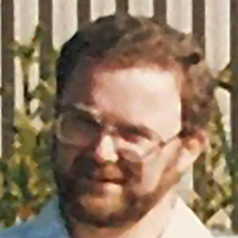
Mal, 1987
